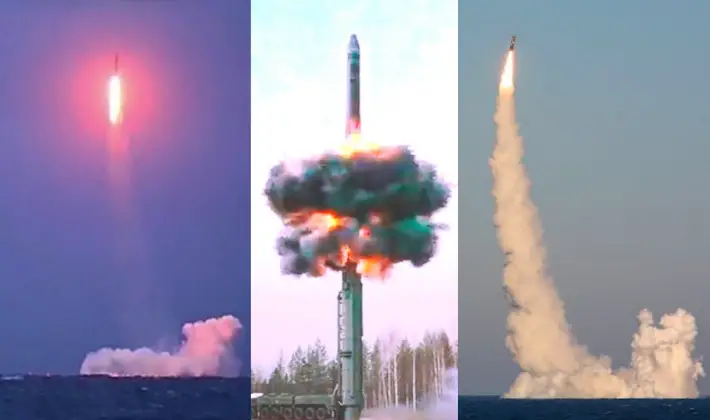<p >The Russian Armed Forces have carried out major strategic deterrence exercises from October 29, which have involved the launches of multiple intercontinental range ballistic missiles to simulate strikes on potential adversaries. The exercises come at a time of high tensions with the Western Bloc, as Western countries <a href=" target="_blank">consider joint strikes</a> with Ukraine from Ukrainian territory against targets across internationally recognised Russian territory using Western missiles such as the Storm Shadow, SCALP and ATACMs. The possibility of a European-led larger scale Western <a href=" target="_blank">military intervention</a> in Ukraine to prevent Russian forces from making further gains has also been <a href=" target="_blank">raised repeatedly </a>by Western leaders, raising the serious possibility of war between Russia and NATO. Although Russia’s ground forces have been expanded and strengthened significantly since early 2022, the country remains seriously outmatched in the capabilities of its tactical combat aviation and surface navy by the combined forces of NATO, which has led Moscow to particularly emphasise the capabilities of its nuclear deterrent which retains parity with the Western Bloc. Reflecting the importance of the exercises, Russian President Vladimir Putin, who also serves as Supreme Commander in Chief, personally participated in the strategic nuclear forces drills.&nbsp;</p><p ><img src=" title="Russian Navy Borei Class Ballistic Missile Submarine"></p><p >Footage released by the Russian Defence Ministry has confirmed the submarine launch of an RSM-56 Bulava intercontinental&nbsp;range&nbsp;ballistic missile from the Sea of Okhotsk near Japan. The new missile class was operationalised in 2018, and is deployed from the country’s<a href=" target="_blank" > most modern class</a> of nuclear powered strategic submarine the Borei Class. Each missile carries up to 1.5 megatons of nuclear force split between up to ten warheads – approximately 100 times the nuclear force used against Hiroshima by the U.S. Army Air Force in 1945. The Russian Navy’s fleet of ballistic missile submarines is split between the Arctic and the Pacific fleets, with the bulk of its ships deployed under the former.&nbsp;The fleet of Borei Class submarines&nbsp;currently stands at eight ships, and&nbsp;is <a href=" target="_blank" >expected to be expanded</a> to fourteen, with the class’ performance having led the planned fleet size to be expanded by 40 percent.</p><p >The Russian Defence Ministry subsequently released footage showing the launch of the submarine launch of an R-29RMU Sineva intercontinental&nbsp;range&nbsp;ballistic missile, a lighter and shorter ranged counterpart to the Bulava that first entered service in 2007. The launch was carried out from the&nbsp;Barents Sea.&nbsp;The smaller misses were developed to be accommodated by the Russian Navy’s smaller and older Soviet designed Delta IV Class ballistic missile submarines, effective revolutionising the capabilities of these older ships. Although retaining a comparable range to the Bulava, Sineva missiles can only carry four nuclear warheads.&nbsp;</p><p >The Russian Armed Forces launched a third class of intercontinental range ballistic missile, the RS-24 Yars, which was fired from the Plesetsk Cosmodrome around 800 kilometres north of Moscow. The system forms the backbone of the Russian land based strategic nuclear forces today, with half of all ground-based ICBM regiments having been re-equipped with Yars missiles by mid-2021 – for a total arsenal of over 180 ICBMs. The Yars&nbsp;represents a lighter counterpart to the heavier R-36 and RS-28 Sarmat silo based missiles that are approximately four times as large. Approximately 90 percent of Yars missiles are road mobile, with each designed to carry three 200 kiloton nuclear warheads.&nbsp;</p>
Russia Launches Multiple ICBMs in Major Nuclear War Drill: A Breakdown of Each Missile Class Involved

